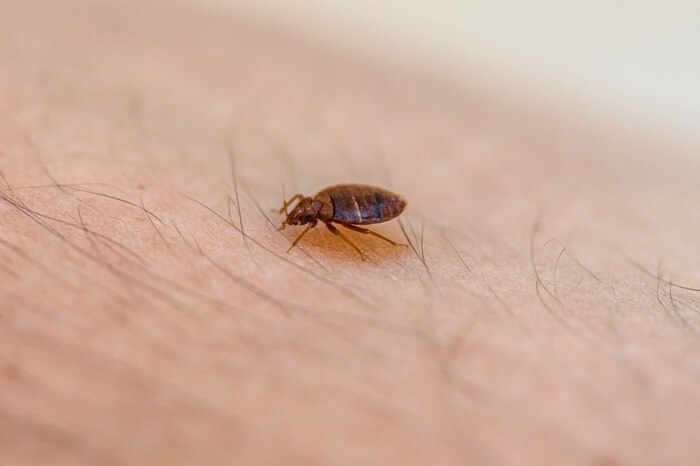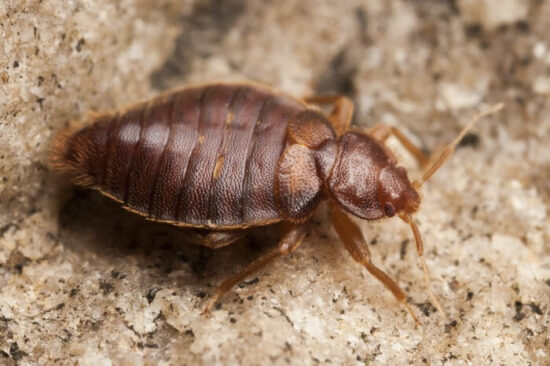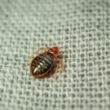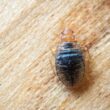We often hear from homeowners asking us “How long can bed bugs live without food?” once they’ve noticed signs of an infestation. We understand where this question is coming from, because the starvation method certainly seems appealing.
In this guide we’ll go over how long bed bugs can live without feeding on a host, and why that impacts the way you get rid of them.
Table of contents
How Long Can Bed Bugs Live Without Food?
One very common misconception is that depriving bed bugs of their food source will solve an infestation problem.
We’d like to make it clear from the beginning that this couldn’t be further from the truth. In fact, using the “starvation method” may actually compound the problem and cause the bed bugs to spread quickly throughout your home.
It does seem kind of counterintuitive that bed bugs (who need blood to survive) won’t be eliminated simply by depriving them of their food source. But unfortunately, bed bugs can live for quite a while without food.
Quick Tip: Understanding why this happens is important if you want to get rid of your bed bugs for good. Don’t be that person who wastes time and money trying remedies that will never work.
There is some debate as to how long bed bugs can live without food. However, the general consensus seems to be that bed bugs can live from about two months to a little over a year without eating. There are a multitude of factors that contribute to this wide time span, and we’ll talk about them a little bit later.
- Kill bed bugs and bed bug eggs
- Use spray as a spot treatment around bed frames, mattress seams/tufts/folds, and baseboards
- Kills even the toughest bed bugs
- The continuous spray Comfort Wand easily gets into hard-to-reach areas
So, how are bed bugs able to go without feeding for a whole year? If they find that conditions are not favorable, then they can go into a state of semi-hibernation called diapause. Not to be confused with mammalian hibernation, diapause puts bed bugs into a kind of dormancy that can last until conditions improve.
Diapause allows the bed bugs to go a long time without food by slowing down their metabolism and conserving energy. This makes it tricky for anyone trying to rid their home of these persistent insects, because it’s easy to think that the bed bugs are gone when they’re actually just “hibernating.” As soon as the conditions become favorable again, they will resume their regular feeding habits, and your infestation will usually be worse than it was before.
How They Feed
The phrase, “Good night. Don’t let the bed bugs bite”, has been part of American culture since sometime in the 1800’s. Even the author F. Scott Fitzgerald used the phrase in one of his books.
These days, parents say it to kids as a kind of cute nighttime ritual, but at one time, this phrase had real significance. Before the days of modern pest control, people would be literally tormented at night by these insidious insects. Going to bed was a nightly battle, with the humans almost always losing to these very adaptable creatures.
There is lots of misinformation floating around the internet about bed bugs and their feeding habits, so we feel that it’s important to learn the real facts.

First of all, despite what many people fear, bed bugs do not spread diseases. Unlike other blood suckers such as ticks or lice, bed bugs are not known to carry any type of pestilence with their bite. Unless you cause an infection by scratching or picking at the area where you were bitten, the worst you’ll probably get is a very itchy, red bump.
Another common misconception is that bed bugs only feed at night. While it’s certainly true that a bed bug’s favorite time to feast is between midnight and about five in the morning, they will feed during the day given the right conditions. Daytime feeding, however, is not as common.
Now that we have cleared up some popular myths about bed bugs and their bites, let’s take a quick look at how they actually feed on their hosts.
If you could get a close-up view of a bed bug getting ready to feed, you would see a long, snout-like feature called a proboscis. This proboscis is needle-sharp and is used to puncture the victim’s skin. This tool also acts like a straw to suck the host’s blood.
Quick Tip: However, before the bed bug even pierces the skin, it uses its saliva to numb the skin and nerves around the area where it wants to feed. This is why you usually don’t feel a bed bug bite until well after the fact. The saliva also contains a chemical that keeps the blood flowing until the feeding session is complete.
After the bed bug is finished with its meal, usually after 10 minutes or so, it simply pulls out the proboscis, goes somewhere to digest its meal and waits until it’s ready to feed again (although they can live for a while before feeding again if needed).
What Influences How Long Bed Bugs Can Live Without A Host?
We already discussed how long a bed bug can potentially live without feeding on a host, but it’s also super important to know why this happens. There are several factors that can determine how long these insects can survive without food. Each of these elements has an influence on the method and time factor for eliminating an infestation.
Perhaps one of the most well-known factors that determines how long a bed bug can live without food is temperature. In fact, many pest control specialists may recommend using high temperatures to deal with an infestation. The effectiveness of this technique is subject to debate, so we think that it’s best to check out a selection of methods before beginning any kind of treatment.
- Kill bed bugs and bed bug eggs
- Use spray as a spot treatment around bed frames, mattress seams/tufts/folds, and baseboards
- Kills even the toughest bed bugs
- The continuous spray Comfort Wand easily gets into hard-to-reach areas
The reason that many people turn to high heat as a bed bug elimination method is that bed bugs are not known to live above 120 degrees Fahrenheit. They also can’t live if the temperature drops below zero degrees Fahrenheit. Of course, this is a general rule, and there are select bed bugs that may have adapted to high or very low temperatures. This is one of the things that can make getting rid of an established infestation so frustrating.
Now, if the temperature is anywhere between zero or 120 degrees Fahrenheit, the bed bugs may decide to go into the state of hibernation that was discussed above. They can remain in this state for quite some time and will stay there until the conditions improve. Of course, if they remain in hibernation for too long, they will eventually die.
The other factor that determines the length of time between feedings is the life cycle of the bed bug. Young bed bugs require more frequent feedings than their adult counterparts.
A baby bed bug, also known as a nymph, needs to survive five different stages of development before it is considered to be an adult. While in each stage, the nymph will feed and shed its skin. After it completes both of these steps, it will evolve to the next stage until it has completed all five stages of growth. As it grows closer to adulthood, the nymph will need less food than at the previous stage (meaning they can survive longer without feeding).
Quick Tip: Temperature can also affect nymphs, and they may not survive if they are dormant for too long without food.
The type of bed bug involved in the infestation is another factor that can influence how long the insect can live without a host. There are nearly one hundred different kinds of bed bugs around the world, but only about three actually feed on humans. Some of these strains can live without food longer than others, so it just depends on the kind of bed bug that has infested your home.
How Often They Feed
Under normal conditions, an adult bed bug will feed on human blood every three to seven days. The rest of the time it stays in a sort of resting, digestive state. If you’re noticing bites every few days, then your bed bug problem may be in the beginning stage. However, if you’re feeling bites every morning, then you most likely have an infestation.
As we discussed above, there are times that bed bugs will go into a dormant state if they’re stuck without food. In this case they may not feed for months. However, the general rule is that a bed bug will feed every few days or so if they have access to a host.
Other factors that will definitely influence how often bed bugs feed include things such as the size of the bed bug population, the number and availability of hosts and the general conditions where the colony is located.
How Long Feeding Lasts
Once the bed bug has pierced the skin and is ready to eat, it will feed for up to ten minutes or so. The actual feeding time depends on the age of the insect, how long ago it fed and how much it ate during the last feeding.
Younger bed bugs tend to require more blood, so their feeding time is usually slightly longer than that of an adult bed bug. In general, recently-fed bed bugs won’t eat again until they are ready, but they may eat sooner if a host is available. In this case, they may feed for a shorter period of time.
This is one of the frustrating things when it comes to a bed bug’s lifespan without food. They don’t need long to stock up!
Conclusion
Once you realize how long bed bugs can live without food, it becomes apparent that the starvation method simply isn’t a viable option. These little insects can outlast your patience!
Fortunately, there are plenty of other methods you can turn to if you’re fighting an infestation. Check out our other bed bug guides to learn more!



